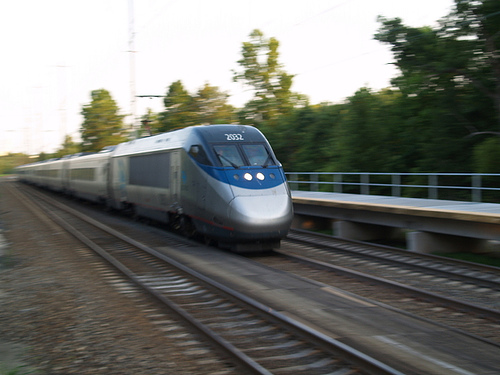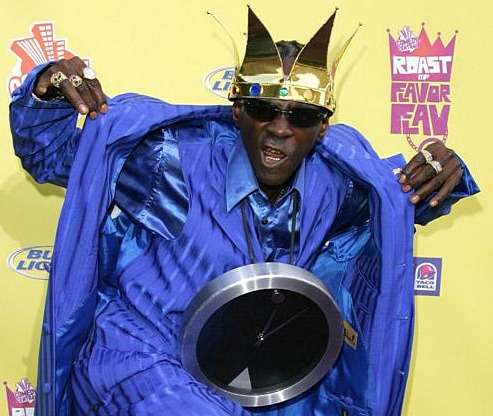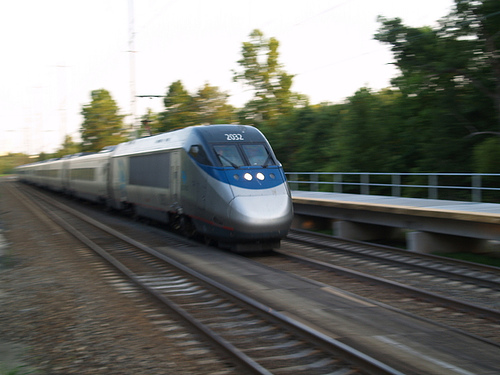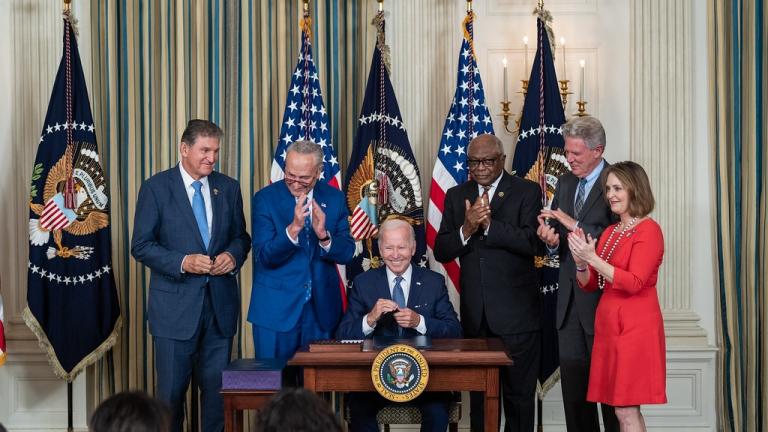 Coming to a station near you any time soon?Photo: Tim GilliamPresident Obama doesn’t seem like he’s going to let this high-speed rail thing go, making it a centerpiece of the infrastructure section of his State of the Union Address last night:
Coming to a station near you any time soon?Photo: Tim GilliamPresident Obama doesn’t seem like he’s going to let this high-speed rail thing go, making it a centerpiece of the infrastructure section of his State of the Union Address last night:
Within 25 years, our goal is to give 80 percent of Americans access to high-speed rail. This could allow you to go places in half the time it takes to travel by car. For some trips, it will be faster than flying — without the pat-down. As we speak, routes in California and the Midwest are already underway.
Sounds great, if you’re a high-speed rail fan. But last fall’s midterm elections exposed GOP opposition to Obama’s plan to bring fast train service to all regions of the country. As a gubernatorial candidate, Republican Scott Walker of Wisconsin made opposition to a Milwaukee-Madison high-speed route a centerpiece of his campaign. After he was elected, he handed the feds back $810 million that would have funded the line, on the grounds that it would be too expensive for the state to run. It was a move echoed by New Jersey Gov. Chris Christie’s rejection of funds for a regular-speed rail tunnel under the Hudson River (Christie is fighting hard not to repay money the feds already spent on that project).
And in California, which ended up getting some of that Wisconsin money, there’s been controversy over the first phase of the state’s own HSR project, with detractors calling it “a train to nowhere” and farm communities worried about the impact on available land.
So it’s notable that Obama doesn’t seem to be backing down from his push to make HSR part of his legacy. That 80 percent figure is pretty aggressive.
The president also hammered away at the need for the need to continue upgrading and repairing the transportation infrastructure we already have:
So over the last two years, we’ve begun rebuilding for the 21st century, a project that has meant thousands of good jobs for the hard-hit construction industry. And tonight, I’m proposing that we redouble those efforts.
We’ll put more Americans to work repairing crumbling roads and bridges. We’ll make sure this is fully paid for, attract private investment, and pick projects based [on] what’s best for the economy, not politicians.
Obama’s stance was cheered by Transportation for America (T4A) a coalition group calling for a reform of the nation’s transportation system. At the same time, the group’s statement also acknowledges the difficulty of getting projects funded. From the statement released by T4A’s executive director, James Corless, today:
We were thrilled to hear the President come right out and say that investment in transportation and other infrastructure is central to rebuilding and growing our economy. An upfront investment in the most-needed, clean transportation projects is a great opportunity to create near-term jobs and lay the groundwork for the future economy.
He acknowledged that money will be tight and we have to make the best of use it. That requires fixing the 20th century infrastructure — our crumbling roads and bridges — as we build out the infrastructure for the 21st. That certainly includes high-speed rail, but it also means helping communities get moving on long-planned networks of light rail, street cars, rapid buses, and making progress on road reconstruction to make our streets safer people walking, biking and driving.
The President’s vision for infrastructure is not just about near-term construction jobs. It is, as he said, about growing new businesses, livable neighborhoods and dynamic regions that can attract a young and mobile workforce and compete with our international competitors. It’s about the jobs associated with new transportation technologies and manufacturing modern transit vehicles, everything from real time information systems to make our highways and transit corridors smarter, to the new rail cars being built today by United Streetcar in Oregon that can breathe new life into our cities and suburbs.
T4A’s Equity Caucus, which focuses on the needs of poor, working-class, and minority Americans, had this to say:
[O]ur inadequate, outdated, and underfunded transportation systems are keeping too many struggling Americans — young and old, rural and urban — from fully connecting and contributing to the national economy.
Millions of Americans rely exclusively on public transit, walking, or biking to get to work, to the doctor’s office, to school, and to the grocery store. Nearly 20 percent of African American households, 14 percent of Latino households, and 13 percent of Asian households live without a car. Fifteen percent of Native Americans must travel more than 100 miles to access basic services.
Smarter transportation investments can unleash the under-realized economic power of communities across America.
All this comes in the context of a transportation reauthorization bill that has been stalled for the past year and a half in Congress — and that was when the Democrats controlled both the House and the Senate. With Republicans now in control of the House, things are bound to get more complicated. Rep. John Mica (R-Fla.), the new Republican chair of the Transportation and Infrastructure Committee in the House, had this to say about the president’s call for more infrastructure spending (via Transportation Nation):
After the Administration derailed a major six-year transportation bill in 2009, it is encouraging that they are now on board with getting infrastructure projects and jobs moving again. However, just another proposal to spend more of the taxpayers’ money, when we have billions of dollars sitting idle tied up in government red tape, will never get our economic car out of the ditch.
We’ve got to do more with less to improve our infrastructure in a fiscally responsible manner.
Central to all future discussion about infrastructure enhancement and repair will be the question of money. With lawmakers avowedly against raising the gas tax, finding the cash to build new systems — or to stop the proverbial crumbling of the old ones — is going to be the biggest problem.



